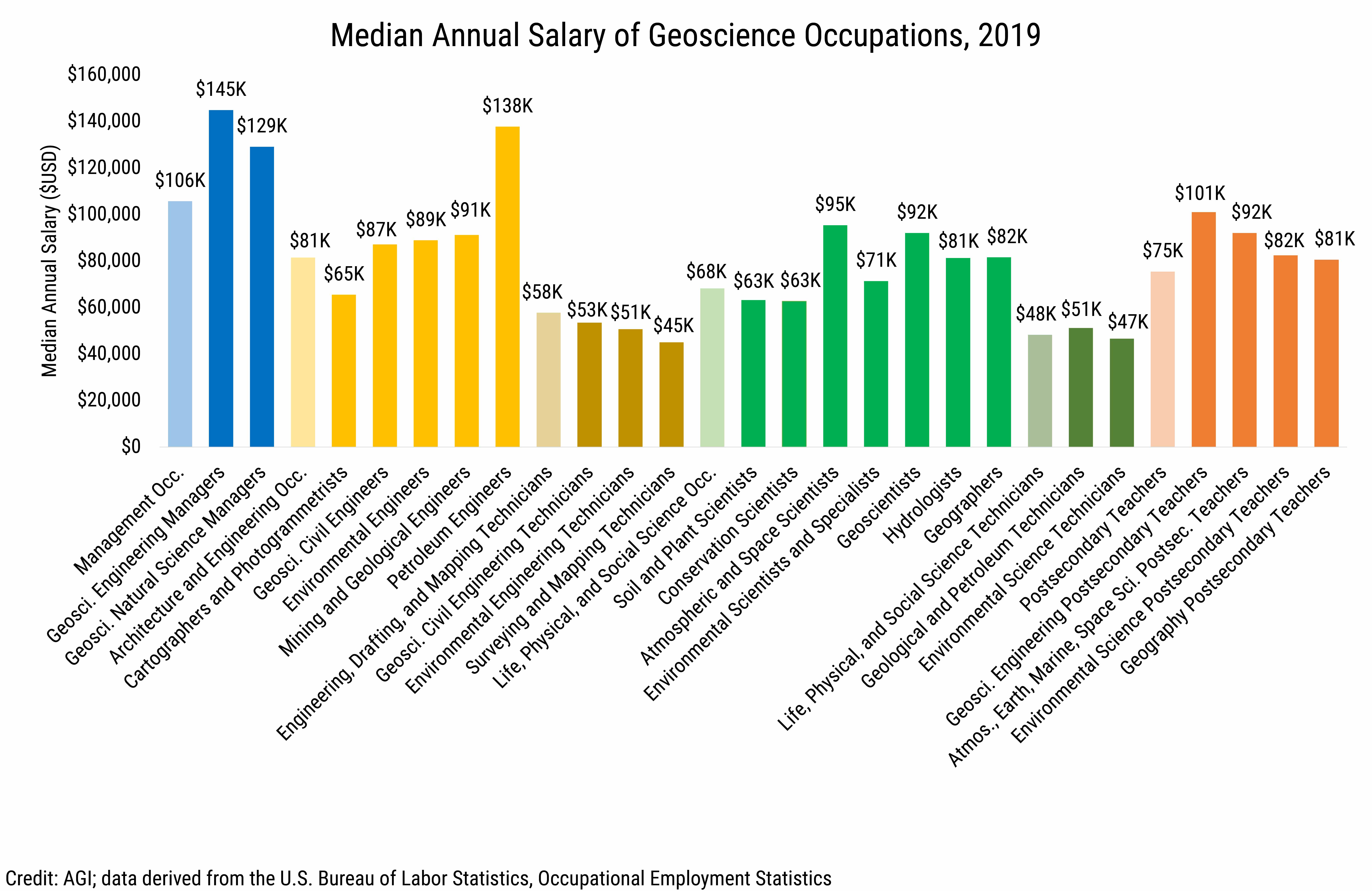1 Why It Matters: Science of Geology
When you ask the question “What is geology?” most people will initially respond that it is the study of rocks and Earth history.
This is correct, but it is a limited definition. Because geology deals with time category it is almost a philosophical discipline because time in geology is enormous and human brain can’t comprehend its vastness and span.
The world Geology consists of two Greek words: Geo and Logos, meaning Study of Earth, or Earth Science. Since late 1990s educational and research institutions replaced Geology with Earth Science, however, the meaning is the same.
A lot of people are attracted to geology and other earth sciences because they love to be outdoors. These people wonder how the magnificent rock formations that they see, like those in Yosemite in California (see figure 1), were formed. They want to study the processes that create and modify landforms.

But earth science is not just about what we can see with the naked eye—the molten lava, icy mountain peaks, steep canyons, and towering waterfalls. Some people want to go deeper, to learn about what drives the surface processes and other features of the planet; for example, why does Earth have a magnetic field? These people are interested in learning about the layers of material that lie beneath the surface, the mantle and the core. Since more than 70 percent of Earth is covered with oceans, it’s not surprising that many people wonder what lies within and at the bottom of the seas.
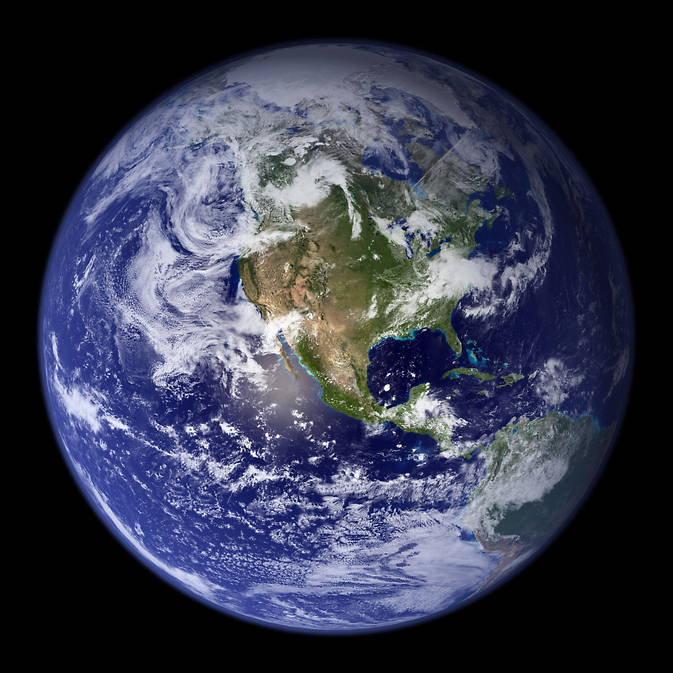
Some people look up and wonder what lies beyond our skies. These people are interested in applying what we know about Earth to our more distant surroundings.
They want to understand our near neighbors, the planets and satellites of our Solar System, and objects that lie far beyond.
SOMETHING LOCAL: MINERALS AND MINING IN NEW YORK CITY:
http://www.johnbetts-fineminerals.com/jhbnyc/articles/nycminerals1.htm
What is Geology?
In its broadest sense, geology is the study of Earth—its interior and its exterior surface, the rocks and other materials that are around us, the processes that have resulted in the formation of those materials, the water that flows over the surface and lies underground, the changes that have taken place over the vastness of geological time, and the changes that we can anticipate will take place in the near future. Geology is a science: we use deductive reasoning and scientific methods to understand geological problems.
Geology is arguably the most integrated of all of the sciences because it involves the understanding and application of all of the other sciences: physics, chemistry, biology, mathematics, astronomy, and others. But unlike most of the other sciences, geology has an extra dimension, that of time—billions of years of it. Geologists study the evidence that they see around them, but in most cases, they are observing the results of processes that happened thousands, millions, and even billions of years in the past. Those were processes that took place at incredibly slow rates—millimeters per year to centimeters per year—but because of the amount of time available, they produced massive results.
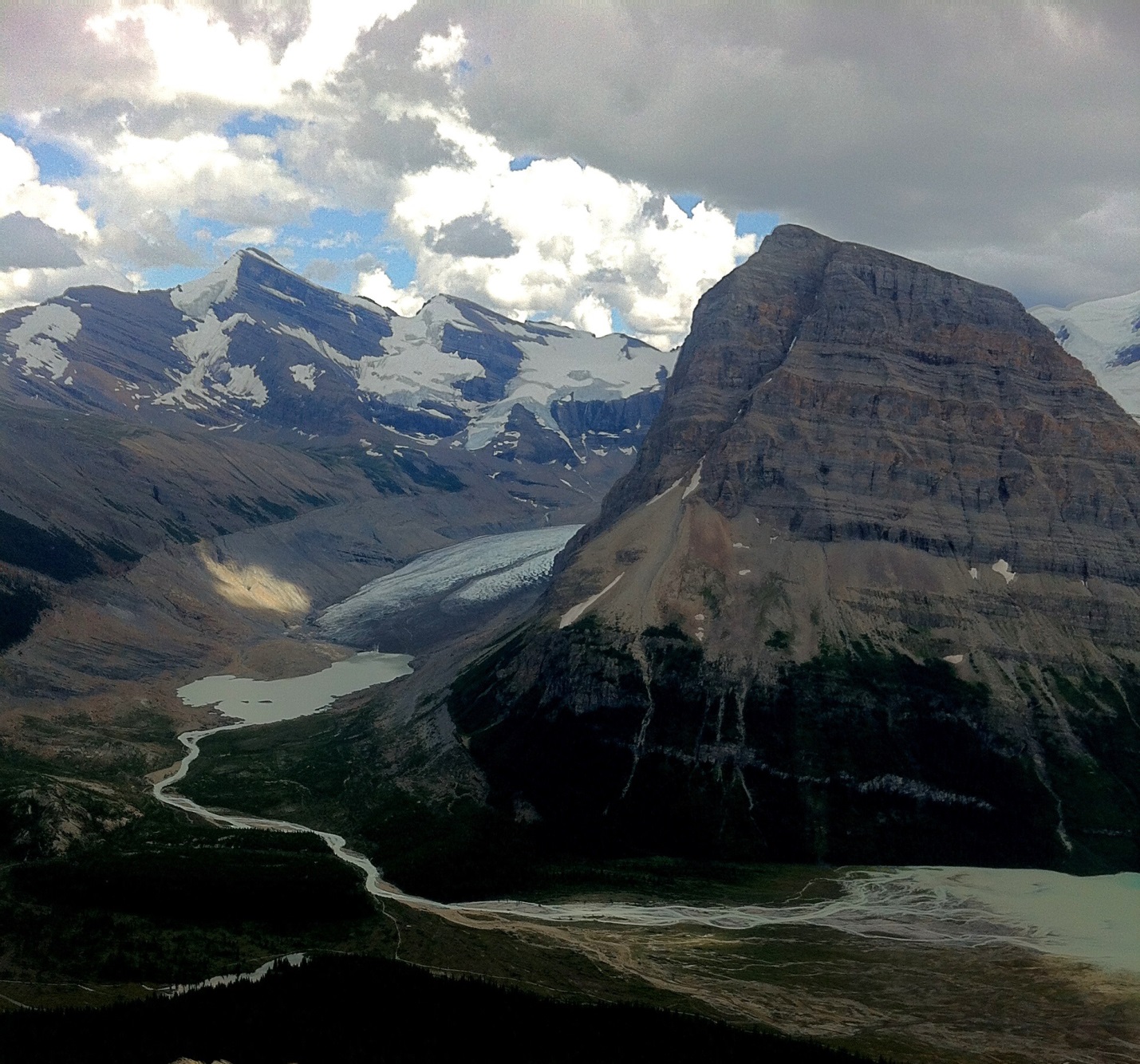
Figure 3. Rearguard Mountain and Robson Glacier in the Rocky Mountains of British Columbia
The sedimentary rock that these mountains are made of formed in ocean water over 500 million years ago. A few hundred million years later, these beds were pushed east for tens to hundreds of kilometers by tectonic plate convergence and also pushed up to thousands of meters above sea level. Over the past two million years this area—like most of the rest of Canada—has been repeatedly glaciated, and the erosional effects of those glaciations are obvious. The Robson Glacier is now only a small remnant of its size during the Little Ice Age of the fifteenth to eighteenth centuries, as shown by the distinctive line on the slope on the left. Like almost all other glaciers in the world, it is now receding even more rapidly because of human-caused climate change.
Geology is also about understanding the evolution of life on Earth; about discovering resources such as metals and energy; about recognizing and minimizing the environmental implications of our use of those resources; and about learning how to mitigate the hazards related to earthquakes, volcanic eruptions, and slope failures. All of these aspects of geology, and many more, are covered in this course.
Each scientific discipline should have their own theory. For example, physics has quantum theory, now string theory, etc. Geology is a very young discipline because its theory appeared only in 1970s. It was called Plate Tectonics Theory. This is a unifying theory for geology because it explains many mysteries associated with rocks, their distribution and Earth historical events. Let’s take a glimpse into the Earth as a dynamic geologic system:
Geology is so much more than just a Dynamic Earth system.
What if I told you geology is an intricate part of your everyday life? You may have to stop and think for a minute about that statement, but let’s consider the following questions:
- Where do your energy resources come from—not just the gas in car, but the components in your cell phones and tablets as well?
- Why does Japan have so many active volcanoes and earthquakes?
- Where our food comes from?
- What is relation of our civilization with geology?
- Can you name at least one product/object in use by our society that is not related to geology?
While some of those questions are obviously geology related, it may take so exploring to find the answers to all of them. Throughout the course, you will learn the information necessary to answer these questions and others like them. We will see that geology is not just rocks but is far more encompassing than that. However, I can’t let this introduction go by without saying GEOLOGY ROCKS!
GEOSCIENCE DISCIPLINES:
As we see, there are many varieties of geology.
There is so much to know about our home planet that most geologists become specialists in one area.
These specialties are known as branches of geology, and have specific titles.
For example, a mineralogist studies minerals while a seismologist monitors earthquakes to help protect people and property from harm (figure 1).

Volcanologists brave molten lava to study volcanoes.

A geologist collecting a lava sample for chemical analyses from an active lava flow on Kilauea, using a rock hammer and a bucket of water. Source: https://en.wikipedia.org/wiki/Volcanology#/media/File:Sampling_lava_with_hammer_and_bucket.jpg
Scientists who compare the geology of other planets to Earth are planetary geologists. Some geologists study Mars.

Source: https://www.nasaspaceflight.com/2021/09/mars-surface-water-bubbles/
Oil and gas geologists look for petroleum.
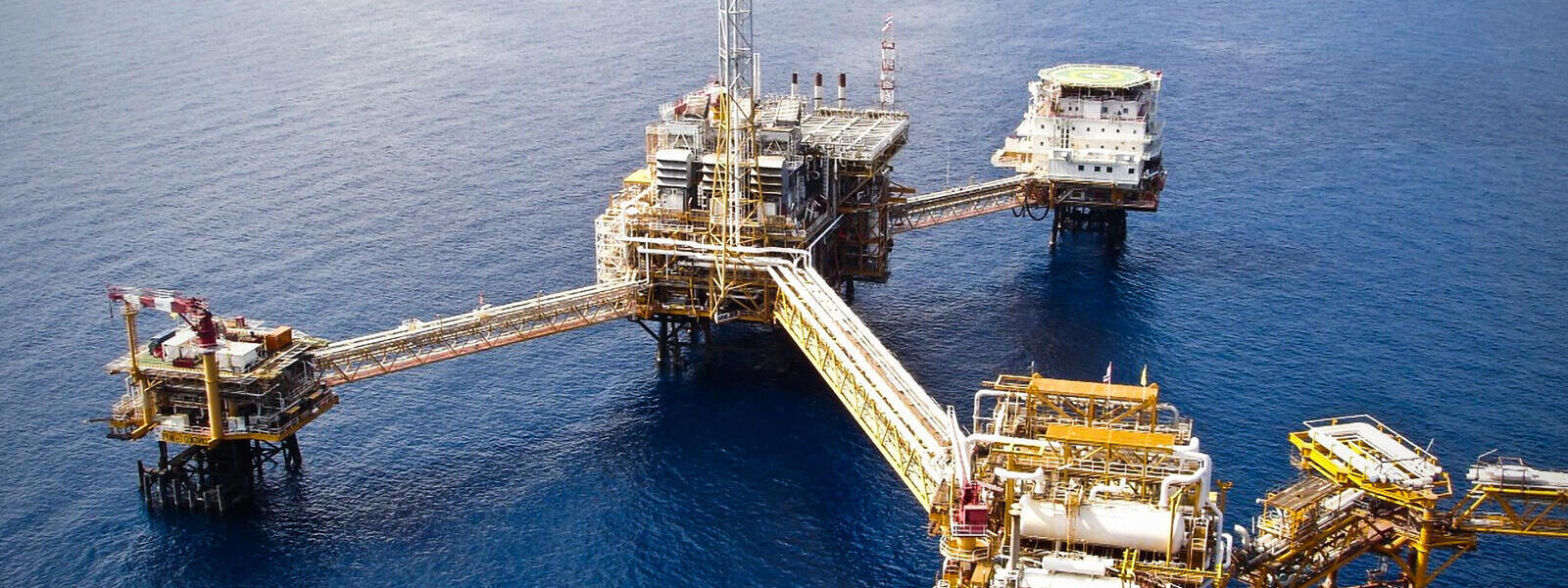
Source: https://www.worldwildlife.org/threats/oil-and-gas-development
Still others specialize in studying soil. They are called pedologists.
Geochronologists can tell how old rocks are and determine how different rock layers formed.
There is probably an expert in almost anything you can think of related to Earth!
Geologists might study rivers and lakes, the underground water found between soil and rock particles, or even water that is frozen in glaciers. Earth scientists also need geographers who explore the features of Earth’s surface and work with cartographers, who make maps. Studying the layers of rock beneath the surface helps us to understand the history of planet Earth.
Some Branches of Geology
As you’ve seen, different branches of geology study one particular part of earth. Since all of the branches are connected, specialists work together to answer complicated questions. Let’s look at some other important branches of geology.
Geochemistry
Geochemistry is the study of the chemical processes which form and shape the Earth. It includes the study of the cycles of matter and energy which transport the Earth’s chemical components and the interaction of these cycles with the hydrosphere and the atmosphere.
It is a subfield of inorganic chemistry, which is concerned with the properties of all the elements in the periodic table and their compounds. Inorganic chemistry investigates the characteristics of substances that are not organic, such as nonliving matter and minerals found in the Earth’s crust.
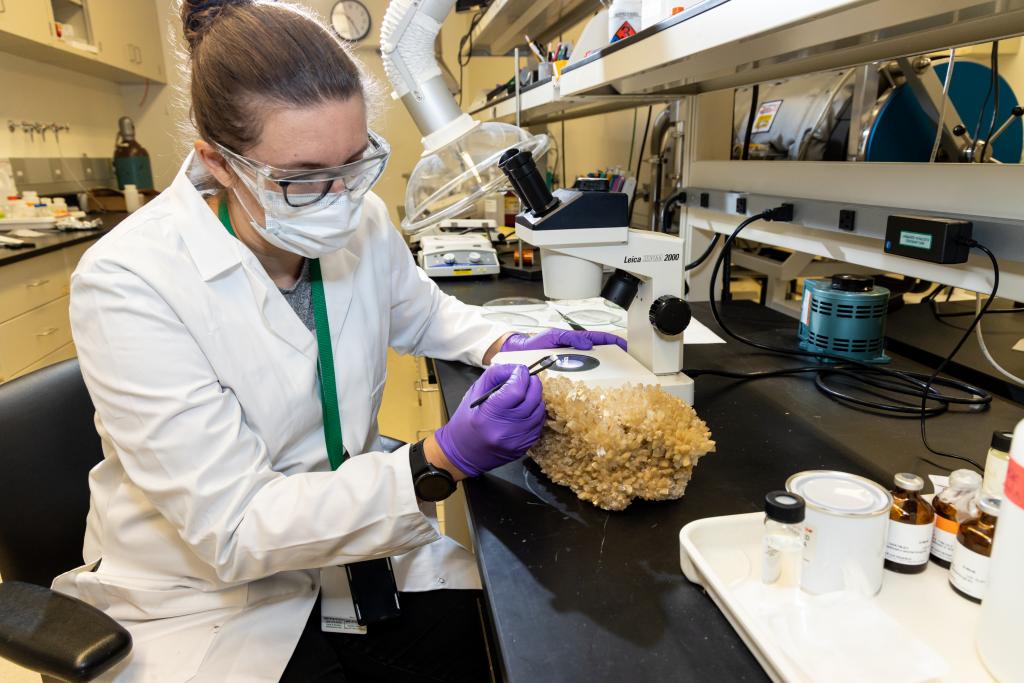
Source: https://www.ornl.gov/project/mechanisms-atomic-pore-scale-geochemical-processes
Oceanography
Oceanography is the study of the composition and motion of the water column and the processes which are responsible for that motion. The principal oceanographic processes influencing continental shelf waters include waves and tides as well as wind-driven and other oceanic currents. Understanding the oceanography of shelf waters and the influence this has on seabed dynamics, contributes to a wide range of activities such as the following:
- assessment of offshore petroleum production infrastructure
- seabed mapping and characterization for environmental management
- marine biodiversity surrogacy research
- assessment of renewable energy potential
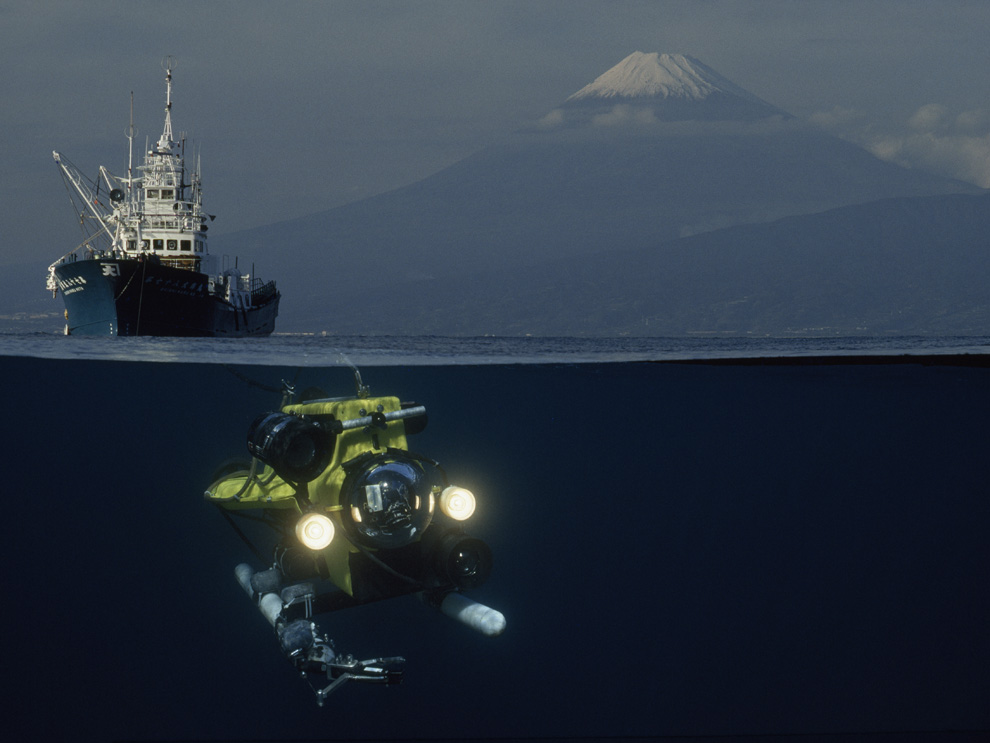
Source: https://education.nationalgeographic.org/resource/deep-dive-oceanography/
Paleontology
Paleontologists are interested in fossils and how ancient organisms lived. Paleontology is the study of fossils and what they reveal about the history of our planet. In marine environments, microfossils collected within in layers of sediment cores provide a rich source of information about the environmental history of an area.
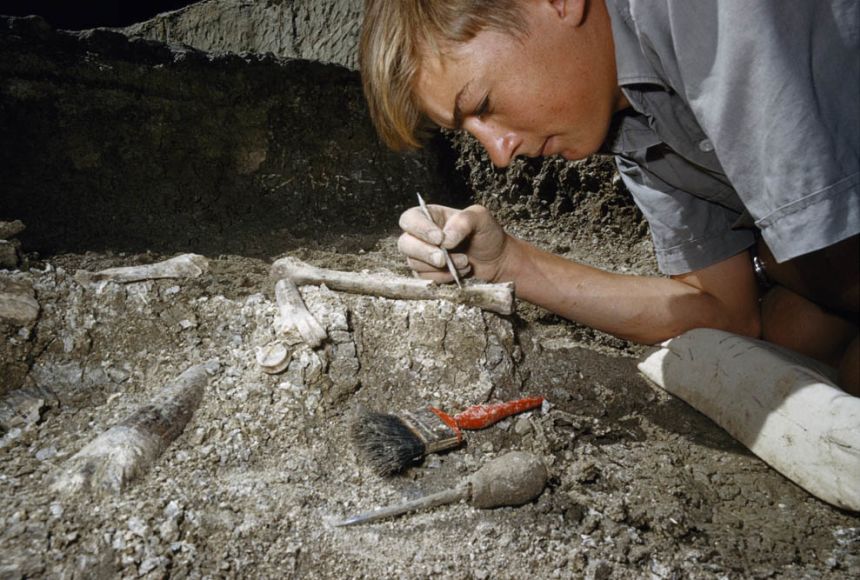
Source: https://education.nationalgeographic.org/resource/paleontology/
Sedimentology
Sedimentology is the study of sediment grains in marine and other deposits, with a focus on physical properties and the processes which form a deposit. Deposition is a geological process where geological material is added to a landform. Key physical properties of interest include:
- the size and shape of sediment grains
- the degree of sorting of a deposit
- the composition of grains within a deposit
- sedimentary structures.
These properties together provide a record of the mechanisms active during sediment transportation and deposition which allows the interpretation of the environmental conditions that produced a sediment deposit, either in modern settings or in the geological record.
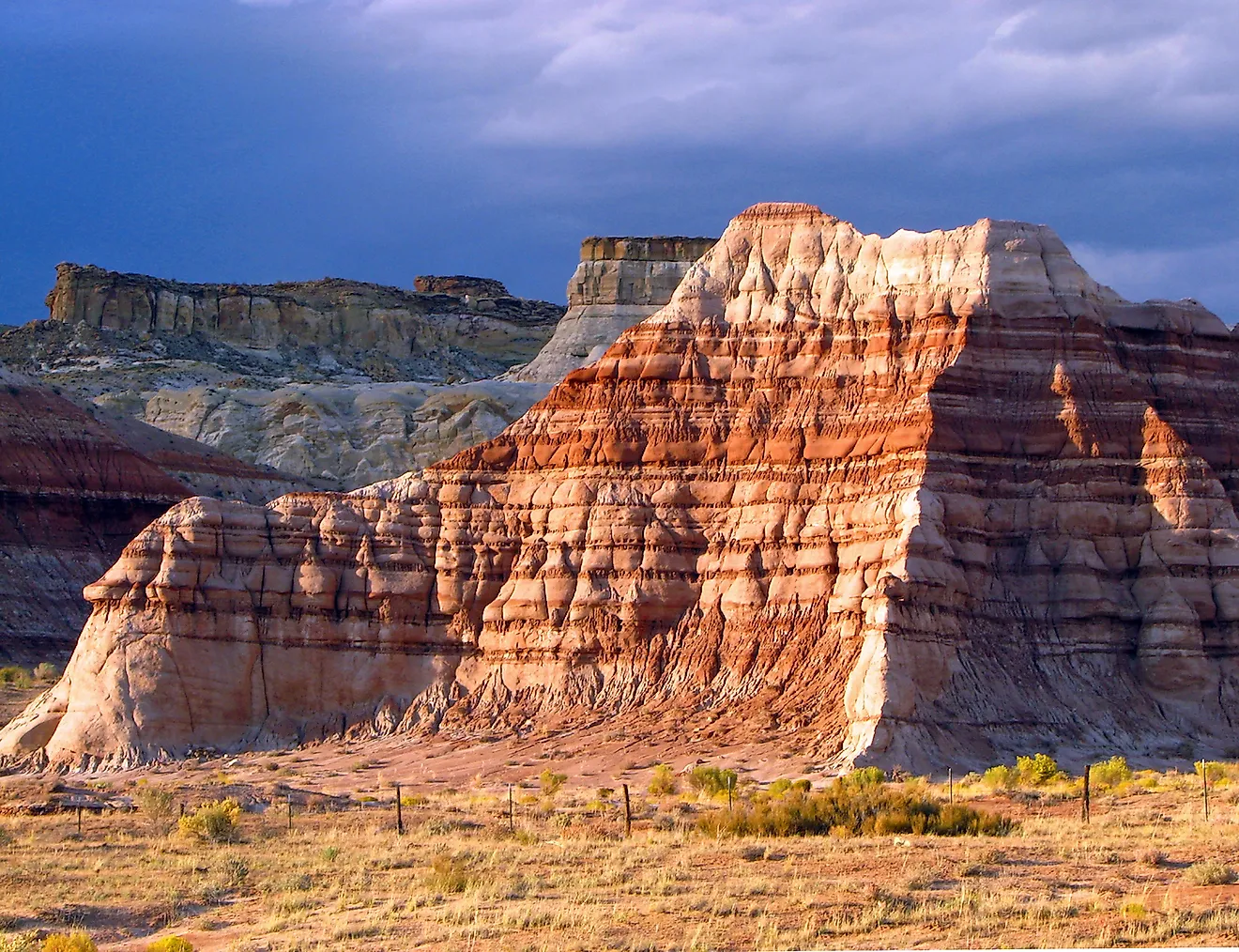
Sedimentary rock cliffs. Image credit: Leene/Shutterstock.com
Source:https://www.worldatlas.com/articles/what-are-sedimentary-rocks.html
Additional Branches of Geology
- Benthic Ecology. Benthic ecology is the study of living things on the seafloor and how they interact with their environment.
- Biostratigraphy. Biostratigraphy is the branch of stratigraphy that uses fossils to establish relative ages of rock and correlate successions of sedimentary rocks within and between depositional basins.
- Geochronology. Geochronology is a discipline of geoscience which measures the age of earth materials and provides the temporal framework in which other geoscience data can be interpreted in the context of Earth history.
- Geophysics. Information relating to various techniques including: airborne electromagnetics, gravity, magnetics, magnetotellurics, radiometrics, rock properties and seismic.
- Marine Geochemistry. Marine geochemistry is the science used to help develop an understanding of the composition of coastal and marine water and sediments.
- Marine Geophysics. Marine geophysics is a scientific discipline which uses the quantitative observation of physical properties to understand the seafloor and sub-seafloor geology.
- Marine Surveying. The survey environment varies from oceanographic studies in the water column to investigating sediment and geochemical processes on the seafloor and imaging the sub-seafloor rocks. Surveys are carried over Australia’s entire marine jurisdiction, from coastal estuaries and bays, across the continental shelf and slope, to the deep abyssal plains.
- Spectral Geology. Spectral geology is the measurement and analysis of portions of the electromagnetic spectrum to identify spectrally distinct and physically significant features of different rock types and surface materials, their mineralogy and their alteration signatures.
Shortage of Geologists
https://www.latitudemedia.com/news/the-imminent-geologist-shortage
Career in Geology
Earth is calling (Geosciences Career): https://www.youtube.com/watch?time_continue=121&v=naMxvhPdi5g
Bureau of Labor Statistics (BLS), Geosciences: https://www.bls.gov/ooh/life-physical-and-social-science/geoscientists.htm#tab-1
According to the Bureau of Labor Statistics (BLS), employment of geoscientists is projected to grow 5 percent from 2023 to 2033, about as fast as the average for all occupations.
The median annual wages for geoscientists in the top industries released by BLS for May 2023 are:
| Mining, quarrying, and oil and gas extraction | $126,140 |
| Federal government, excluding postal service | 110,400 |
| Architectural, engineering, and related services | 85,340 |
| State government, excluding education and hospitals | 82,370 |
| Management, scientific, and technical consulting services | 78,610 |
Source: Bureau of Labor Statistics, U.S. Department of Labor, Occupational Outlook Handbook, Geoscientists,
at https://www.bls.gov/ooh/life-physical-and-social-science/geoscientists.htm (visited August 29, 2024)
American Geosciences Institute Jobs Ads: https://www.americangeosciences.org/jobs/
Geological Society of America Webinars (Career Development):
https://www.geosociety.org/GSA/Education_Careers/webinar/GSA/edu-career/webinars.aspx
